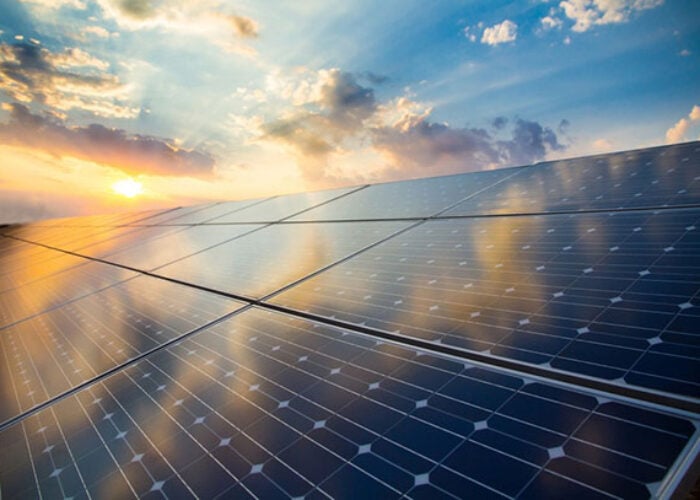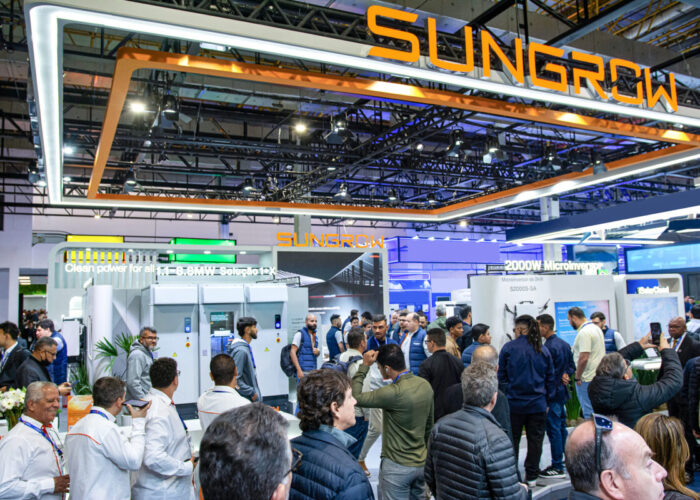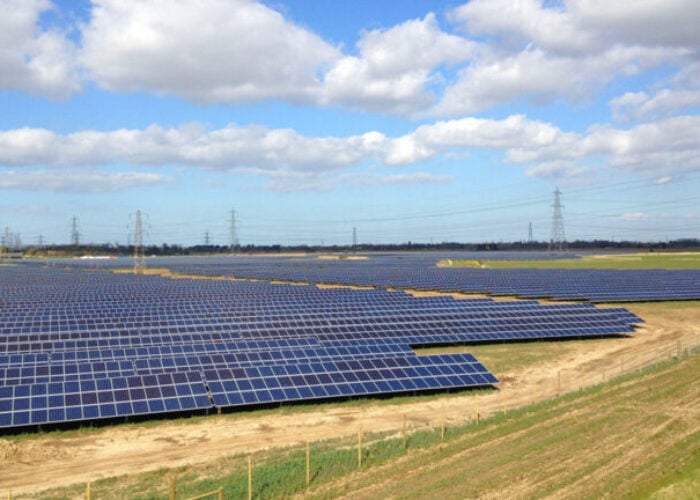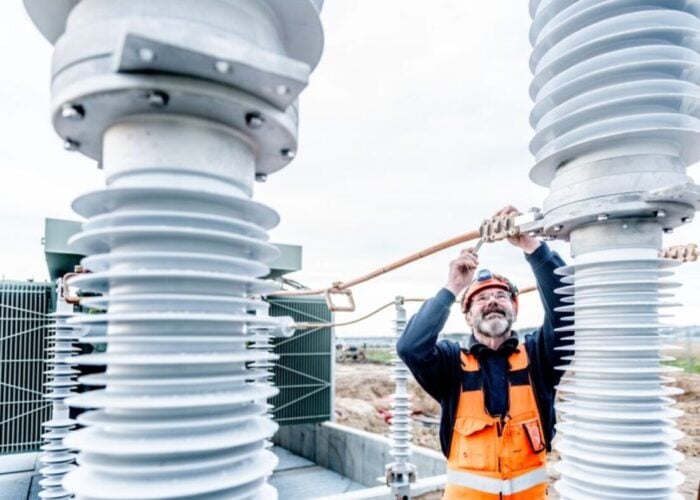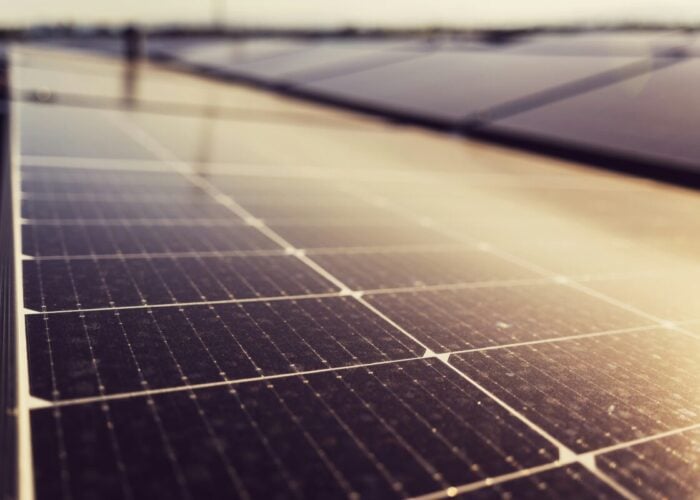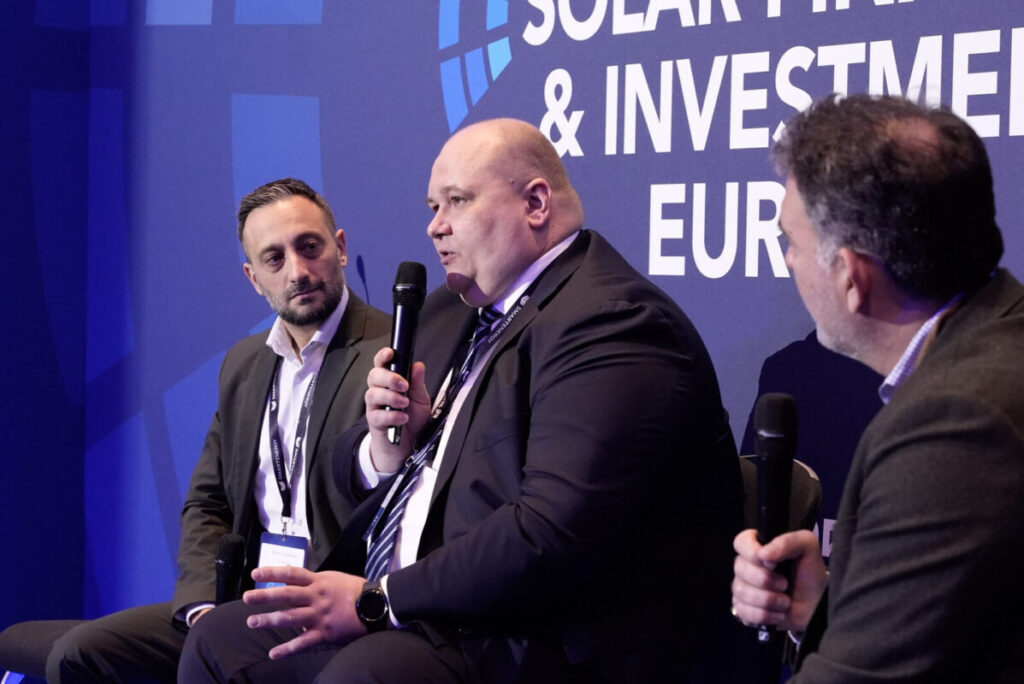
The European renewable power sector saw record investment in 2024. US$121 billion was committed to lower-emission electricity generation, part of a total investment in the power sector of more than US$400 billion. Figures from the International Energy Agency (IEA) note that the EU has one of the highest ratios of clean energy to fossil fuel investment, with more than US$10 committed to renewable power for every dollar invested in the fossil fuel sector.
However, political and macroeconomic challenges have raised questions about the viability of Europe’s renewable energy investment landscape, according to speakers at Solar Media’s Solar Finance & Investment Europe event, held in London last week. While speakers suggested that investment in European solar remains “viable”, this is a much more cautious outlook than the record figures in terms of sheer volume of capital would suggest.
Unlock unlimited access for 12 whole months of distinctive global analysis
Photovoltaics International is now included.
- Regular insight and analysis of the industry’s biggest developments
- In-depth interviews with the industry’s leading figures
- Unlimited digital access to the PV Tech Power journal catalogue
- Unlimited digital access to the Photovoltaics International journal catalogue
- Access to more than 1,000 technical papers
- Discounts on Solar Media’s portfolio of events, in-person and virtual
“As the market develops, there are more and more sophisticated views of the market,” said Aldevinas Burokas, CEO of GoldenPeaks Capital Trading, speaking at one of the panels. He suggested that the maturation of the industry has also contributed to the more cautious investment outlook in Europe at present.
“Because solar is so easy to develop – just last year the wind to solar ratio was 1:5-6 – meaning that there’s so much solar that companies have been buying power purchase agreements (PPAs), mainly from solar,” Burokas continued. “As there are more and more analytical elements being brought into the market, companies started looking at high-risk solutions as a way to acquire something that has a higher proliferation.”
Market maturation
The maturation of the market has encouraged investors and offtakers to sign more complex agreements, and ones that incorporate a range of technology types, as the levelised cost of electricity (LCOE) has changed over time.
“When it comes to PPAs – especially corporate PPAs – relative liquidity appeared maybe ten years ago, and when you have first-time buyers with [high] consumption, they simply chose the technology that was the most cost-effective, so everyone went with wind,” said Burokas. “As solar became more cost-competitive, companies started looking at profile values, and [hedging].”
“When we talk about hybrid PPAs, we talk about including different technologies in the PPA,” agreed Kevni Iljazovski, general counsel at St. Jørgen, who joined Burokas on a panel. “We’re not just talking about a solar PPA or a wind PPA, you’re talking about having all of these technologies together. For renewables, a hybrid PPA could be, for example, solar, wind and storage.”
Iljazovski added that financial challenges – particularly around securing finance from banks – remain in the sector, but that the growth of these hybrid PPAs could help improve the bankability of clean energy projects, and make them a more attractive investment destination.
“It’s always been a problem making a PPA bankable and it always will be,” said Iljazovski. “There’s an element of insecurity around how we will actually [deliver power], but on the other hand, I see it as creating more possibilities and opportunities to make PPAs more bankable. [This can] differentiate the output and when you deliver the power, versus [the idea] that for solar [prices would change] after five in the evening and in the summer when you have negative hours.”
Burokas also suggested that the maturation of the market, and growth of hybrid PPAs, will encourage more deals to be signed in the European solar sector, and bring more companies into the dealmaking space.
“This will lead the path forward, especially as large corporates get saturated with PPAs, and it’s inevitable that [deals] will move down the consumption value chain to small and medium enterprises (SMEs), and when it comes to SMEs, they’re not as advanced,” said Burokas.
“They don’t have the capabilities to structure regular PPAs, so to approach these customers, you have to approach them with a more sophisticated, complex product, and for that, it’s unavoidable that you will have to take a service-based approach … and to do that with combining solar and wind, and perhaps adding storage.”
The vital role of storage
Perhaps unsurprisingly, storage projects were said to be a key component of this push towards hybridisation. Speakers on the event’s panels described storage as key to strengthening revenue in the space, and Iljazovski described the co-location of solar and storage as a “necessity” to the long-term financial viability of both industries.
“When you have an independent power producer (IPP), the reality is that, from an equity perspective, you need storage for a solar portfolio,” said Isabel Rodriguez de Rivera, managing director of clean energy equity investments at Nuveen Infrastructure, another panellist who highlighted the vital role of storage in delivering bankability for projects amid economic disruptions, such as the growing threat of negative prices.
“It makes sense, as it’s going to [protect against] negative prices, so you need to understand out how you’re going to finance battery storage in coordination with your solar PV plants,” said Rodriguez de Rivera.
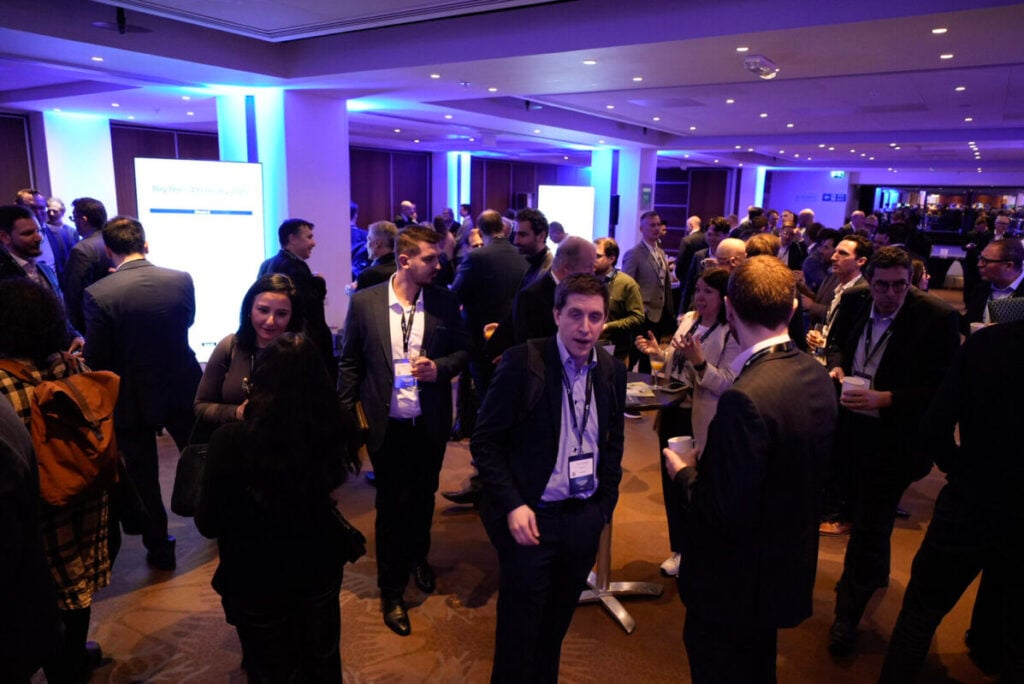
“For solar there’s a good business case [for batteries], considering the profile of solar generation and the cannibalisation you’re likely to see in the middle of the day,” agreed Simon Wannop, director of REG Power Management, which works in the UK. “I think that encourages people to put batteries on and push output further through the day and into the evening.
“Certainly for PPA pricing and mitigating negative prices, batteries are a valuable asset. We’ve hybridised all of our projects, to say to the distribution network operators (DNOs) that we want to have as much import as we can. All of our sites – whether they’re wind or solar – have batteries. It doesn’t really add any cost or risk.”
The combination of multiple technology types has also led to a preference for signing PPAs that combine multiple agreements, delivering on what Rodriguez de Rivera called the potential for “a more flexible way of financing.”
“At the moment we see that customers do not like to sign two PPA agreements, so it’s very important to combine the offer into a single contractual agreement,” said Burokas, who suggested that the next stage of development will be to fully integrate these multi-faceted offtake agreements.
“There’s a bit of a challenge because often, solar starts producing earlier than wind, and it’s not that east to manage the starting dates of these projects, so there’s a bit of a challenge when you’re trying to design directional PPAs.”
A human approach to tackling grid challenges
Many of the event’s attendees also discussed the challenges associated with Europe’s grids, a long-standing issue for investment in the European solar space. A report from Ember found that Europe is on pace to lack 200GW of grid capacity for solar power alone by 2030, following years of over-investment in renewable power generation and under-investment in grid capacity; Wannop said that: “grid hasn’t just been a problem recently, it’s been 20 years.”
Speaking of his experience in the UK in particular, Jonathan Selwyn, managing director of Bluefield Renewable Developments, said that the pressing shortage of grid capacity has altered the way that investors and developers are looking at their solar projects.
“If you don’t use it, it will go to the next person in the queue,” said Selwyn, who went on to suggest that this has created an environment where co-location, despite being a more attractive investment in general, can be challenging to deliver in markets with the most pressing shortage of grid capacity.
“The DNO has moved to an approach that’s ‘use it or lose it’, so in terms of being able to share a grid connection, the key thing is the phasing of the project. I think it’s very difficult to plan [co-location] in this current environment. It can be done, you’ve got to have everything lined up at the same time, and know what you’re doing with the grid connection … and the DNOs have got to know when you’re doing it.”
Last year, at another of Solar Media’s events, experts on Eastern Europe’s grid suggested that the region could benefit from a more “intelligent” approach to operations, and one that makes better use of technologies such as artificial intelligence. Selwyn, meanwhile, suggested that the UK’s grids would benefit from a more personal touch, calling for greater collaboration between actors such as grid operators, investors and developers.
“We have to say to [grid operators] ‘we want a connection here but if we invest in this grid supply point, it will improve the situation for the grid locally and provide more connections for us and other people’, but you can’t really have that conversation, you can only talk about your particular connection that you’ve applied for,” said Selwyn.
Fewer mergers, more opportunities
Many of these challenges, combined with the maturity of the European solar market, mean that appetite for significant investments in the solar sector, and acquisition of other companies, has diminished. Pietro Radoia, a senior analyst at Bloomberg NEF, said that mergers and acquisitions, in particular, is “a market that is cooling down” as companies and projects mature and solidify their positions in the sector.
“Higher interest rates and lower liquidity have contributed to the lower transaction volumes that we’ve seen in the last 12-18 months,” added Ruth Lai, vice president of investment at InfraRed Capital Partners, pointing to the macroeconomic headwinds that have made such sweeping investments less attractive.
“A bit concerning is that transaction volume is tied directly to liquidity and liquidity is tied directly to the fundraising environment; we’ve seen a persistent delay in fundraising, therefore I would say that, if we compare the transaction volume to 2019, it’s probably going to a bit lower.”
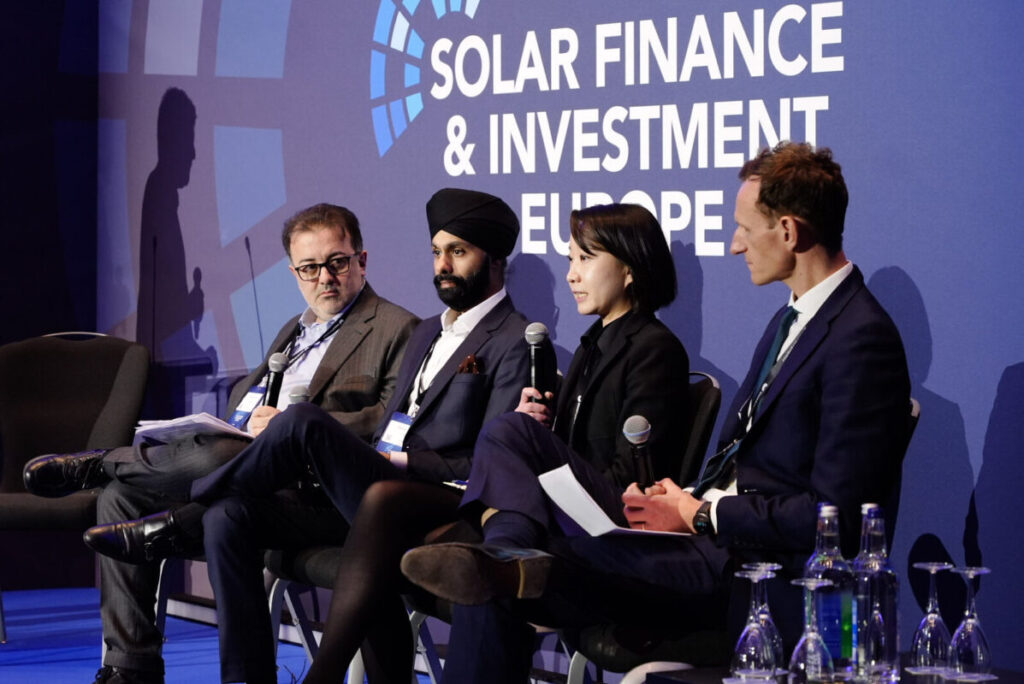
However, this maturity and consolidation is not necessarily a bad thing, as it has encouraged investors and developers to look for more complex and nuanced financing models and project types. According to Iljazovski, it is this financial environment that has pushed the European renewable energy sector towards co-location and hybridisation.
“Where my company is operating, we can see that having a hybrid project, where there are at least two technologies operating – preferably all three, meaning solar, wind and storage – has become quite essential for us in the Nordics to actually get the financing for the PPA,” said Iljazovski, who suggested that this transition could ultimately help deliver more reliable power from the renewable energy sector.
“The trend, especially for an investor or for a lender, [is that] you have to have combined technologies, because they want you to be able to play a bit with your profile, and see that you can not only develop pay-as-produce, but see you able to maybe deliver baseload power and more stable power throughout the whole day.”

